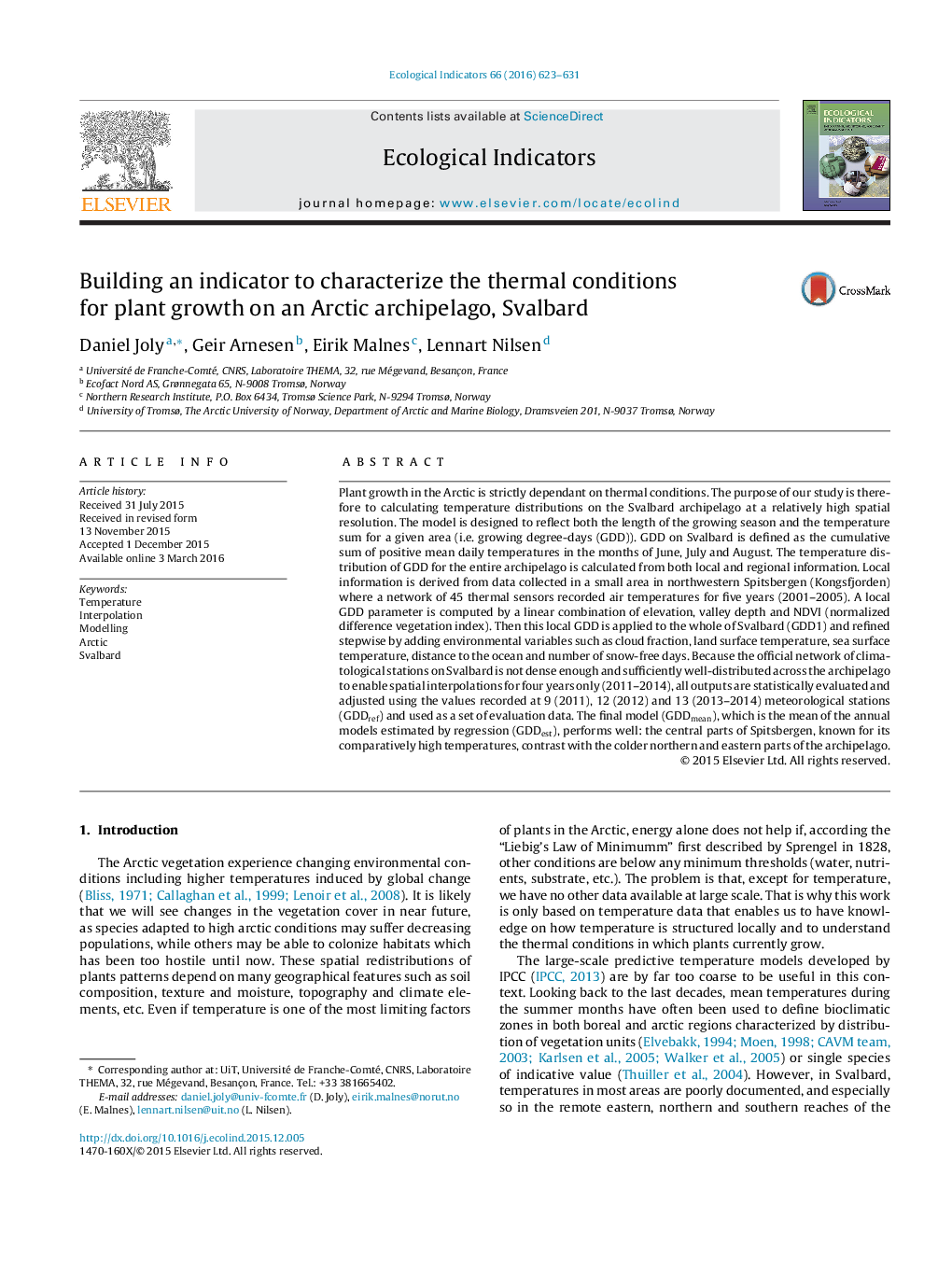| Article ID | Journal | Published Year | Pages | File Type |
|---|---|---|---|---|
| 6293563 | Ecological Indicators | 2016 | 9 Pages |
Abstract
Plant growth in the Arctic is strictly dependant on thermal conditions. The purpose of our study is therefore to calculating temperature distributions on the Svalbard archipelago at a relatively high spatial resolution. The model is designed to reflect both the length of the growing season and the temperature sum for a given area (i.e. growing degree-days (GDD)). GDD on Svalbard is defined as the cumulative sum of positive mean daily temperatures in the months of June, July and August. The temperature distribution of GDD for the entire archipelago is calculated from both local and regional information. Local information is derived from data collected in a small area in northwestern Spitsbergen (Kongsfjorden) where a network of 45 thermal sensors recorded air temperatures for five years (2001-2005). A local GDD parameter is computed by a linear combination of elevation, valley depth and NDVI (normalized difference vegetation index). Then this local GDD is applied to the whole of Svalbard (GDD1) and refined stepwise by adding environmental variables such as cloud fraction, land surface temperature, sea surface temperature, distance to the ocean and number of snow-free days. Because the official network of climatological stations on Svalbard is not dense enough and sufficiently well-distributed across the archipelago to enable spatial interpolations for four years only (2011-2014), all outputs are statistically evaluated and adjusted using the values recorded at 9 (2011), 12 (2012) and 13 (2013-2014) meteorological stations (GDDref) and used as a set of evaluation data. The final model (GDDmean), which is the mean of the annual models estimated by regression (GDDest), performs well: the central parts of Spitsbergen, known for its comparatively high temperatures, contrast with the colder northern and eastern parts of the archipelago.
Related Topics
Life Sciences
Agricultural and Biological Sciences
Ecology, Evolution, Behavior and Systematics
Authors
Daniel Joly, Geir Arnesen, Eirik Malnes, Lennart Nilsen,
